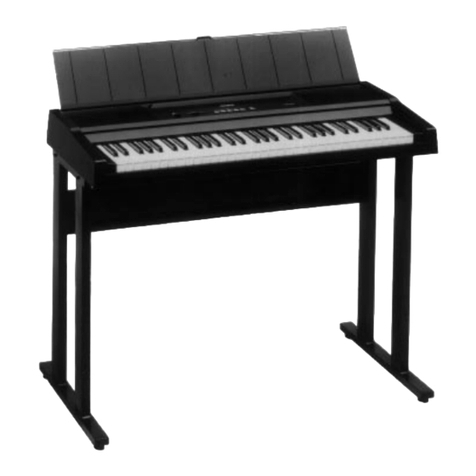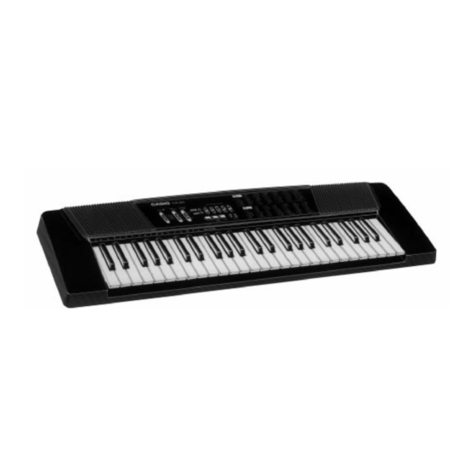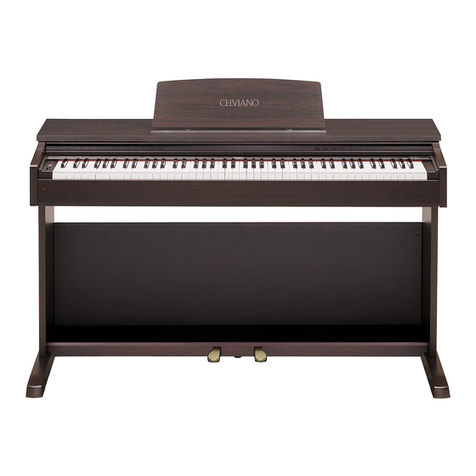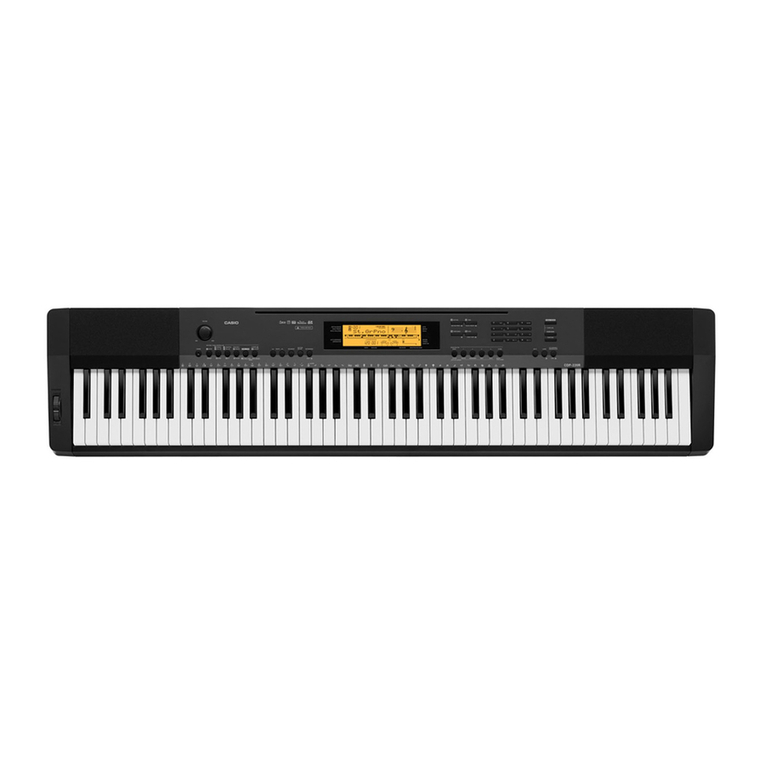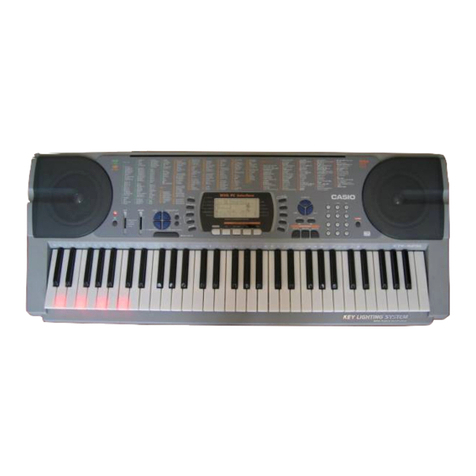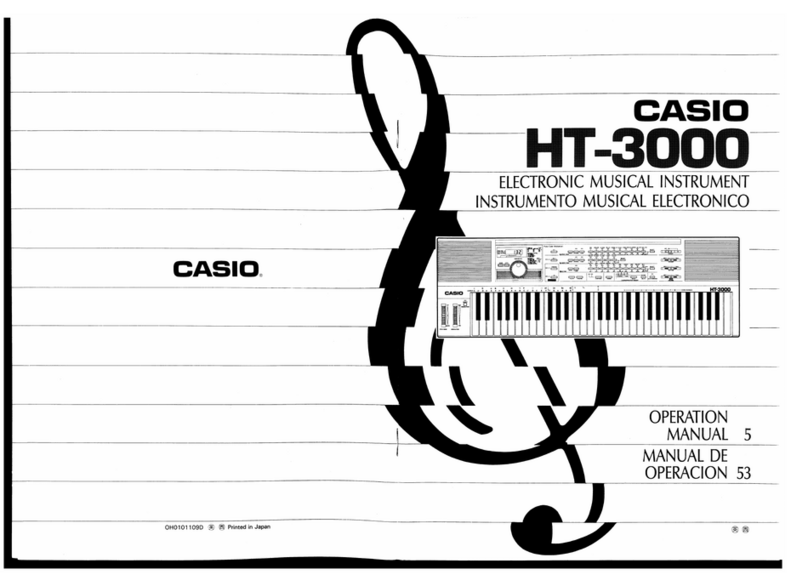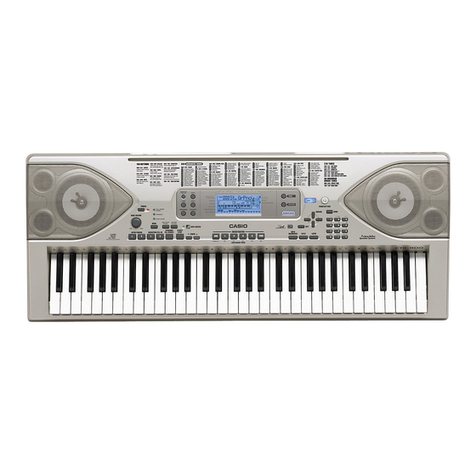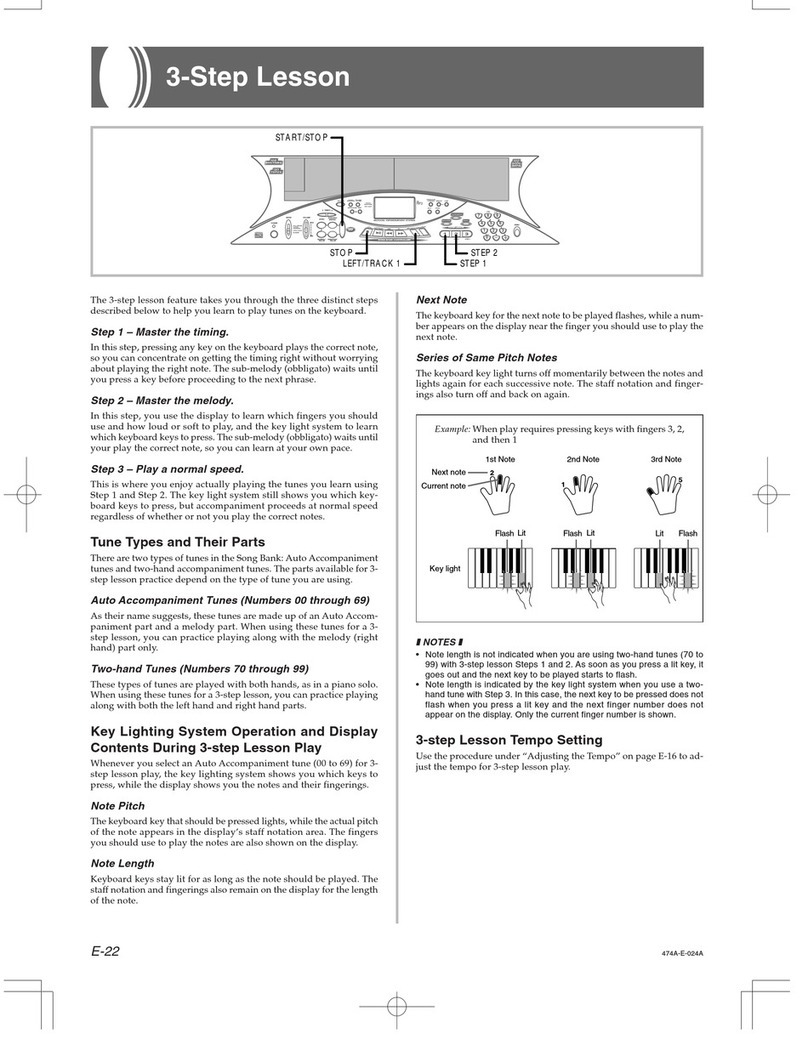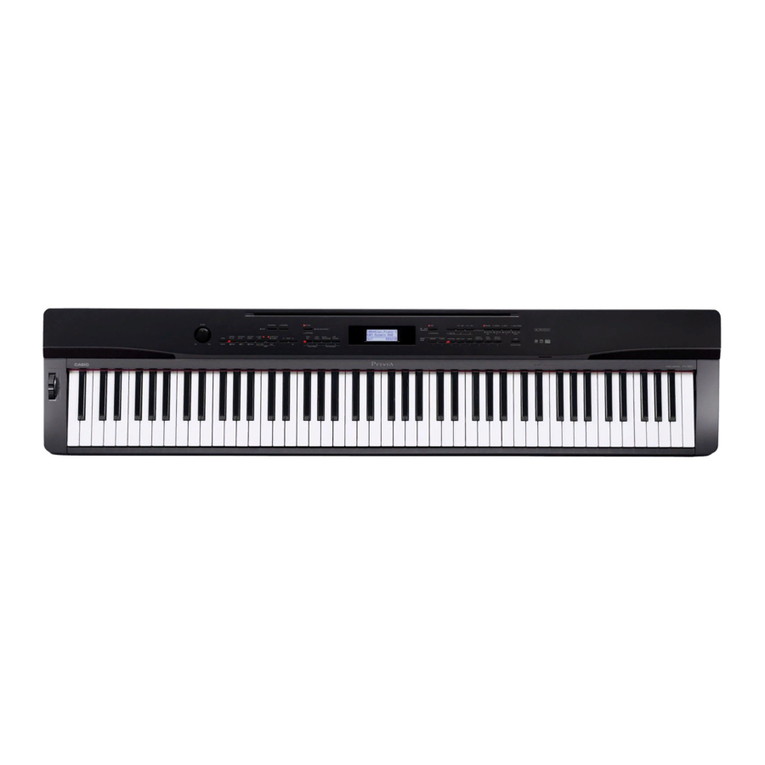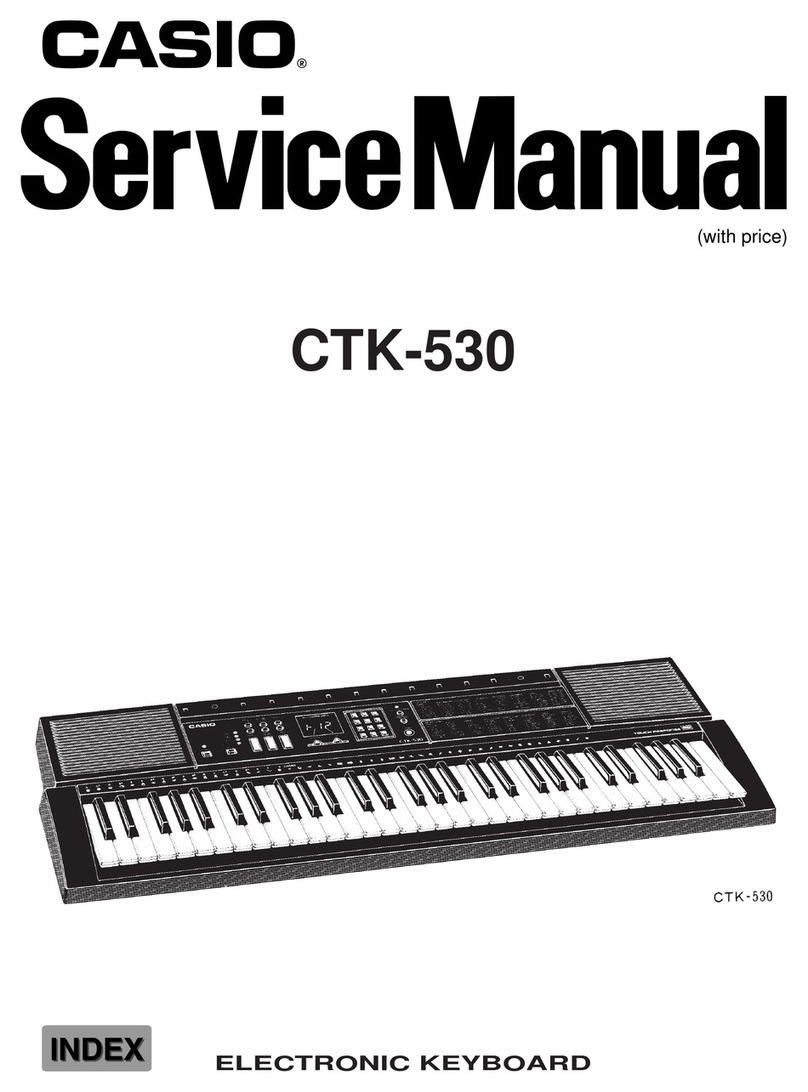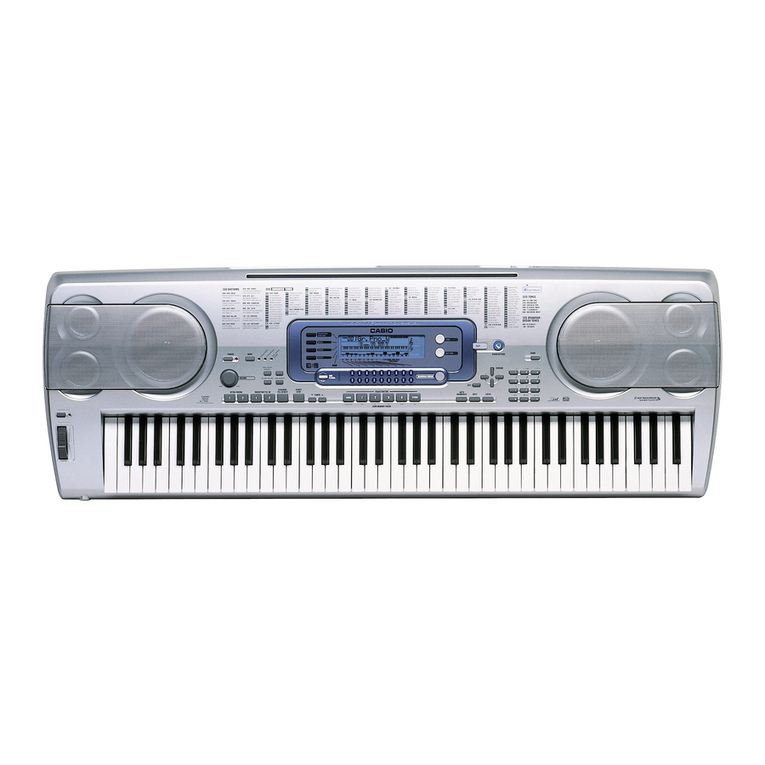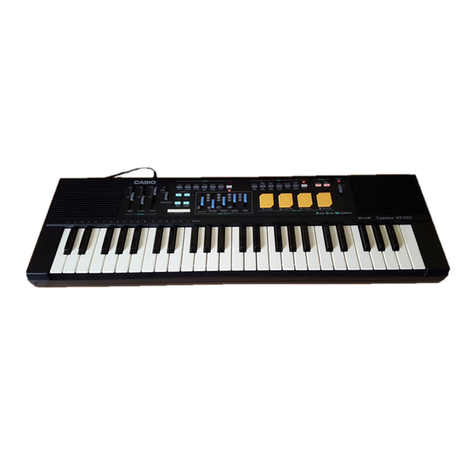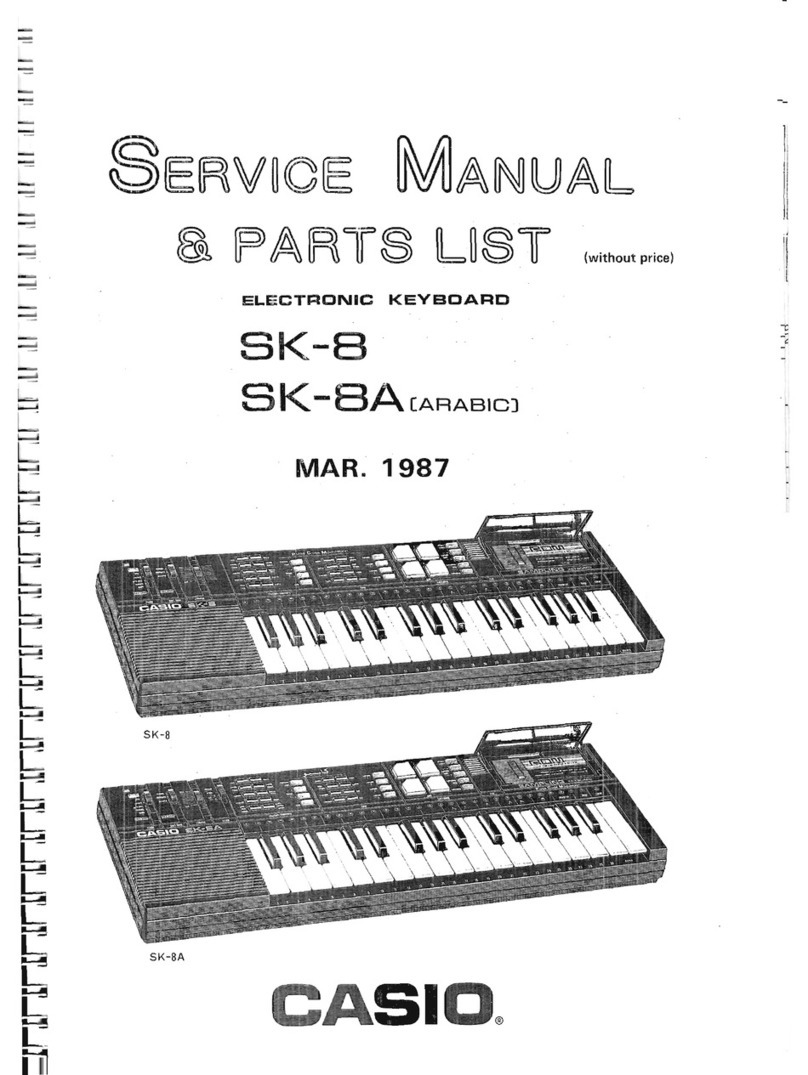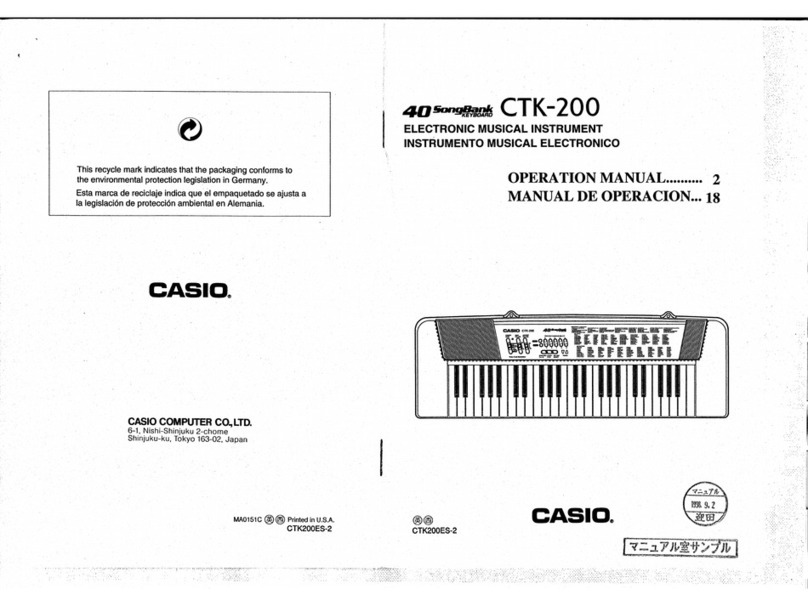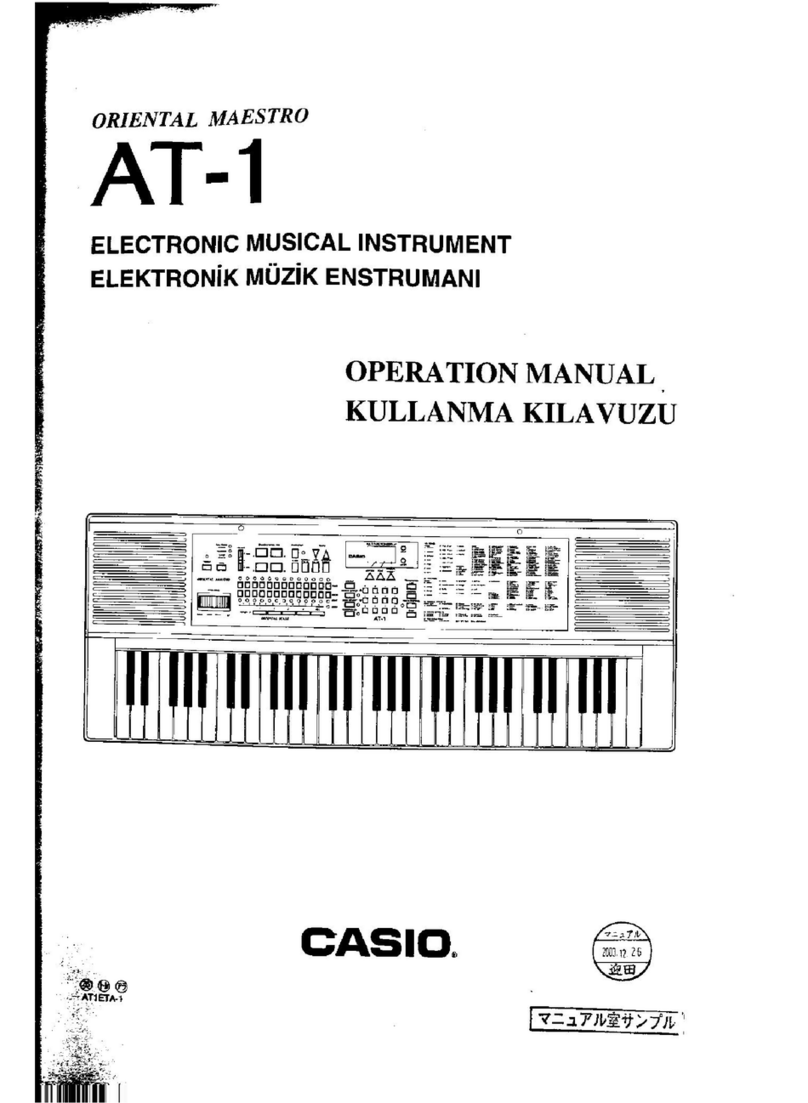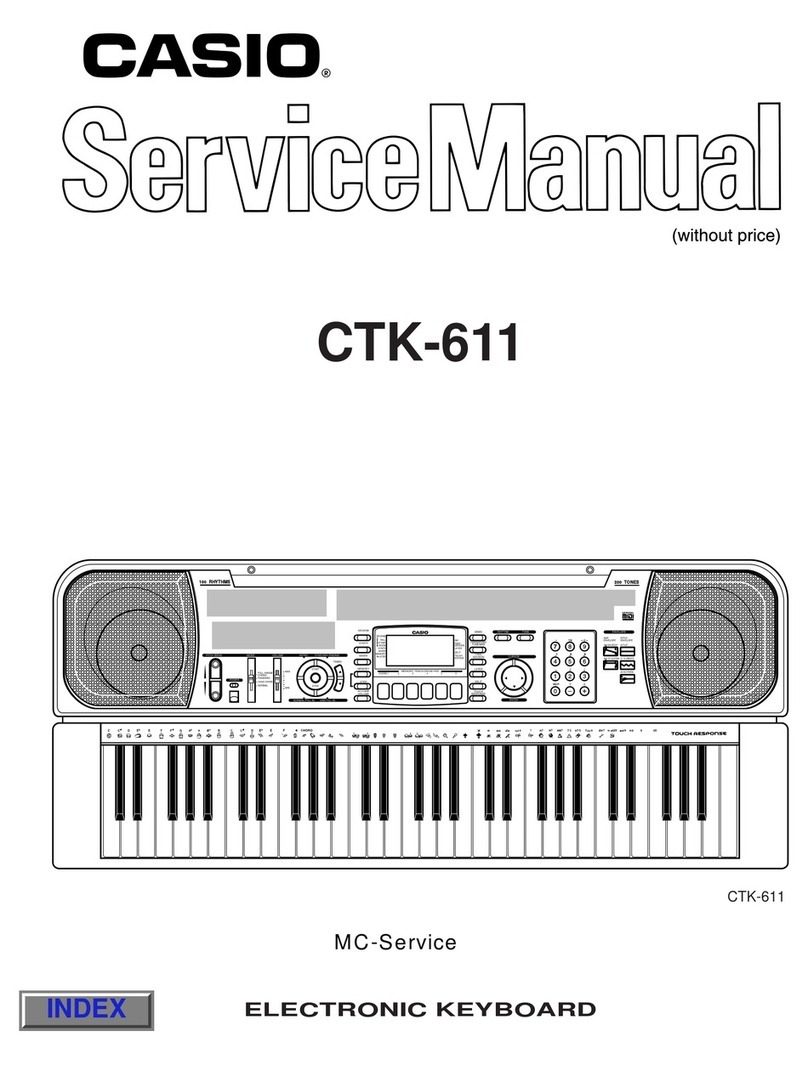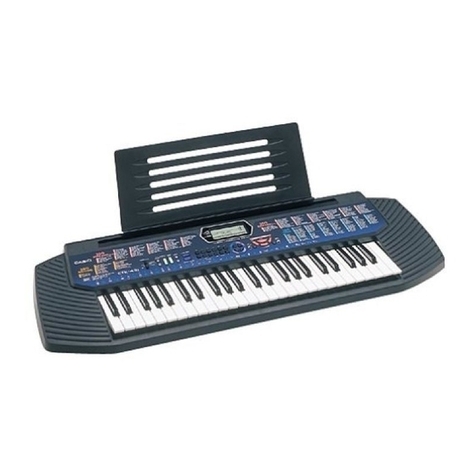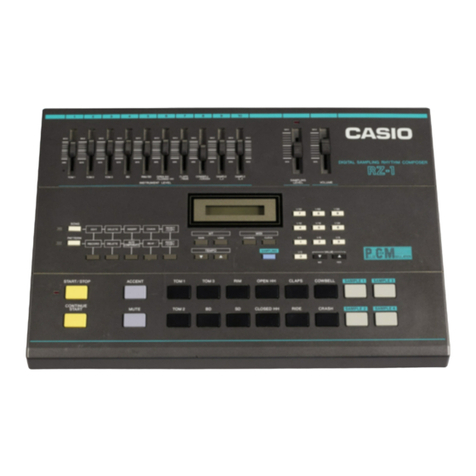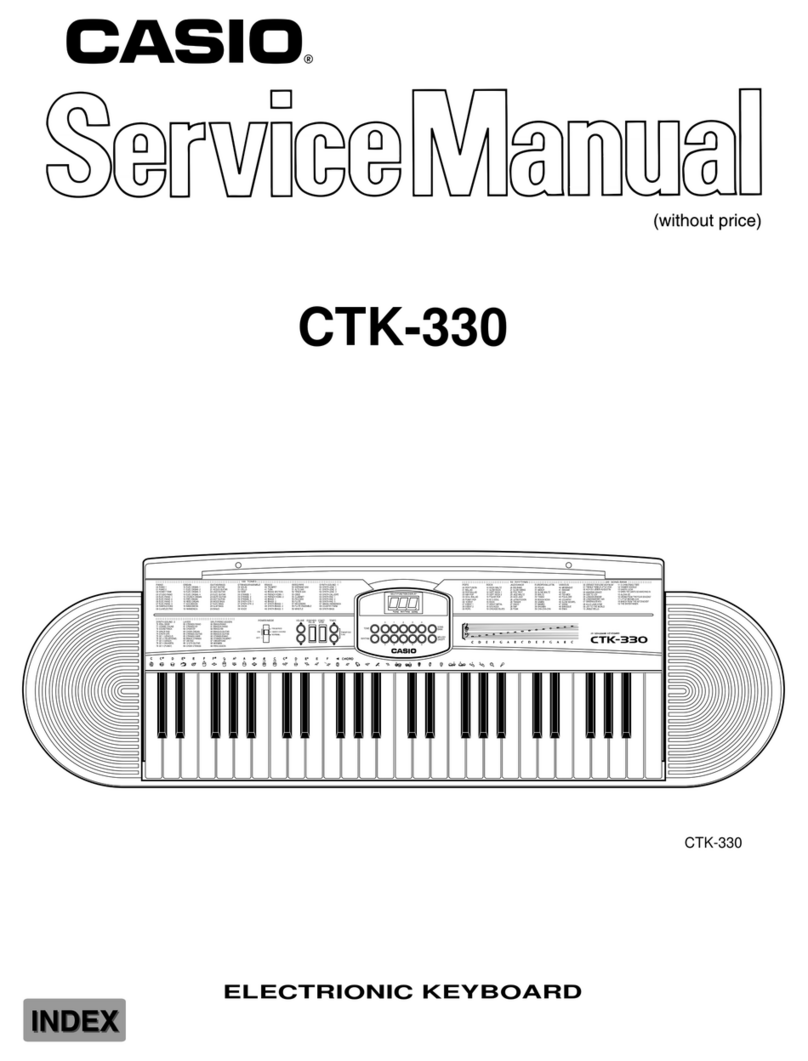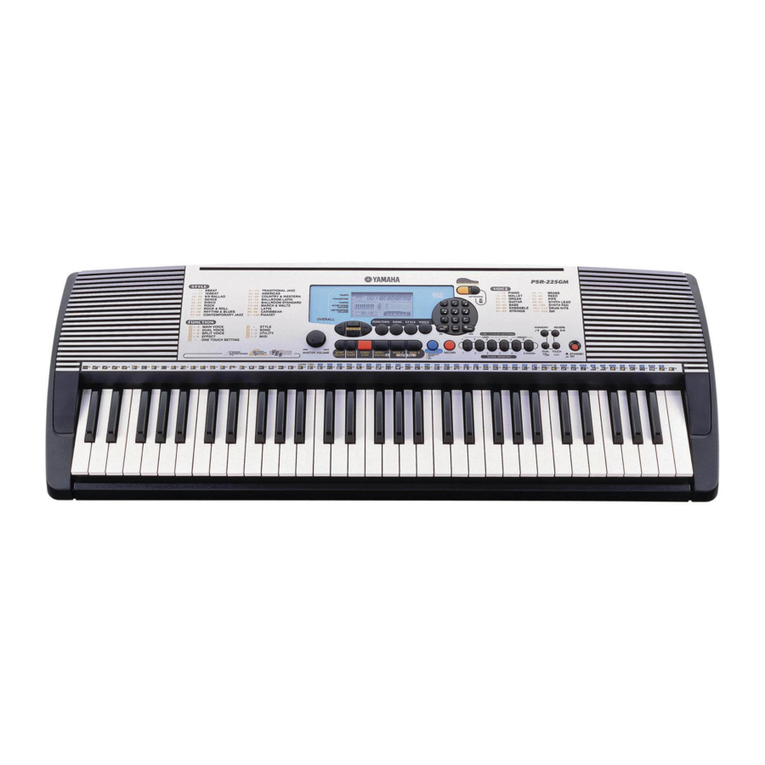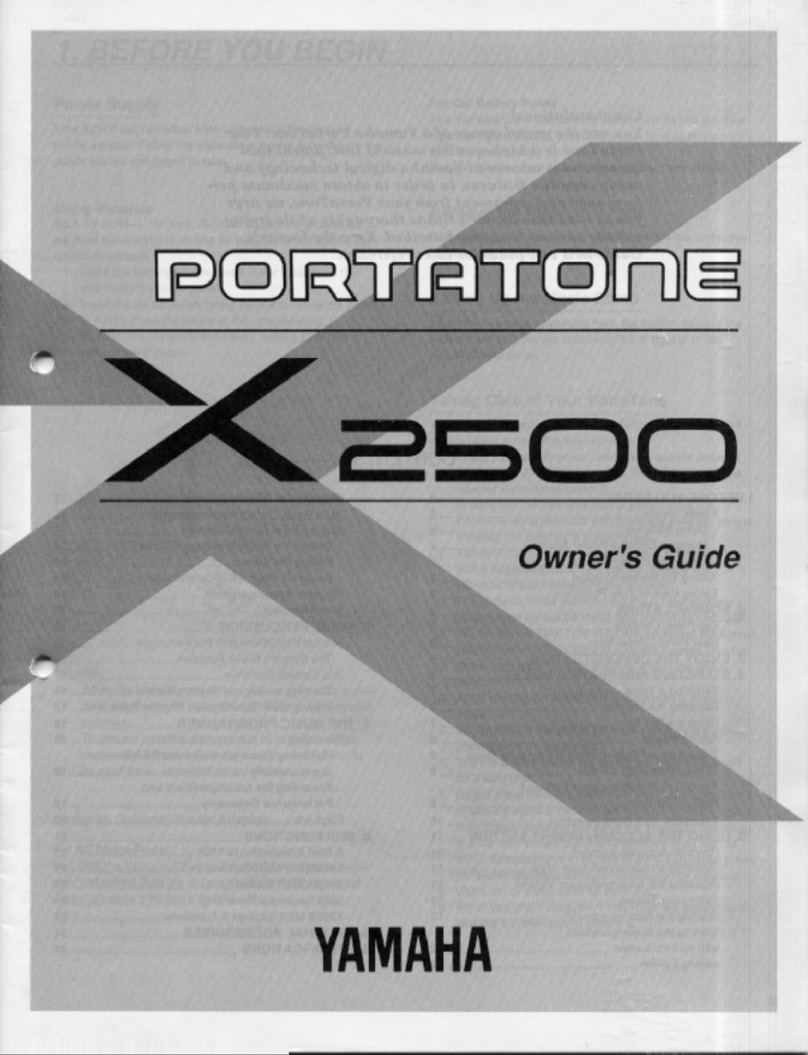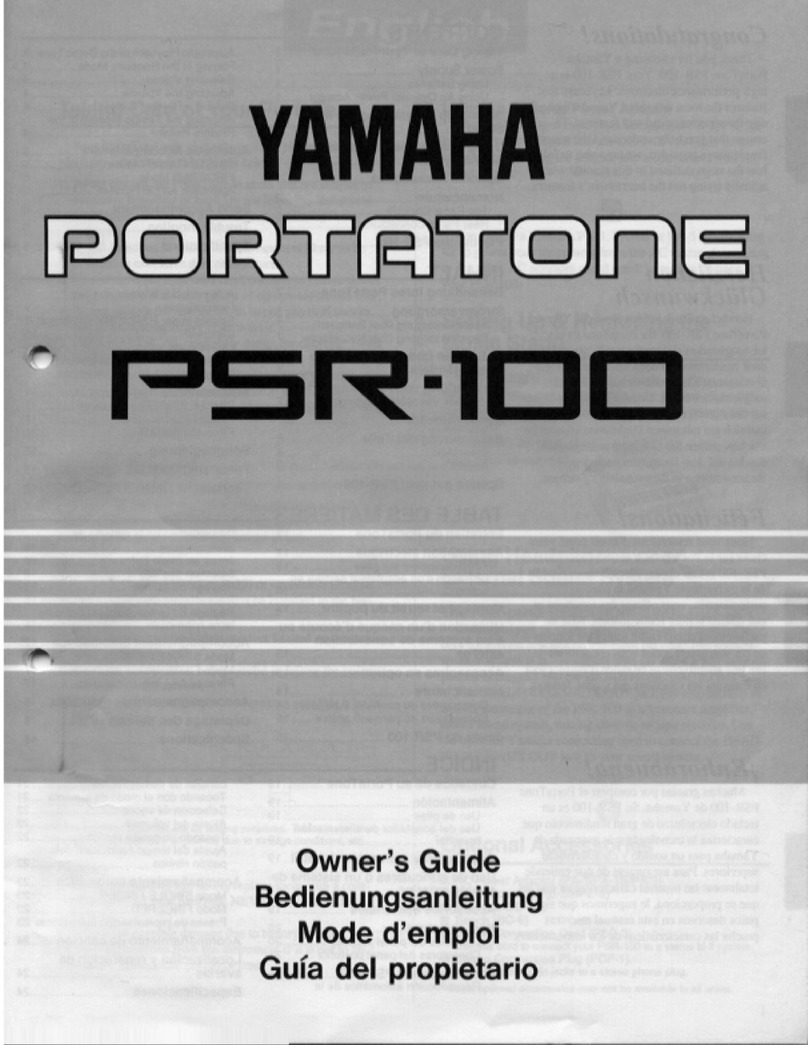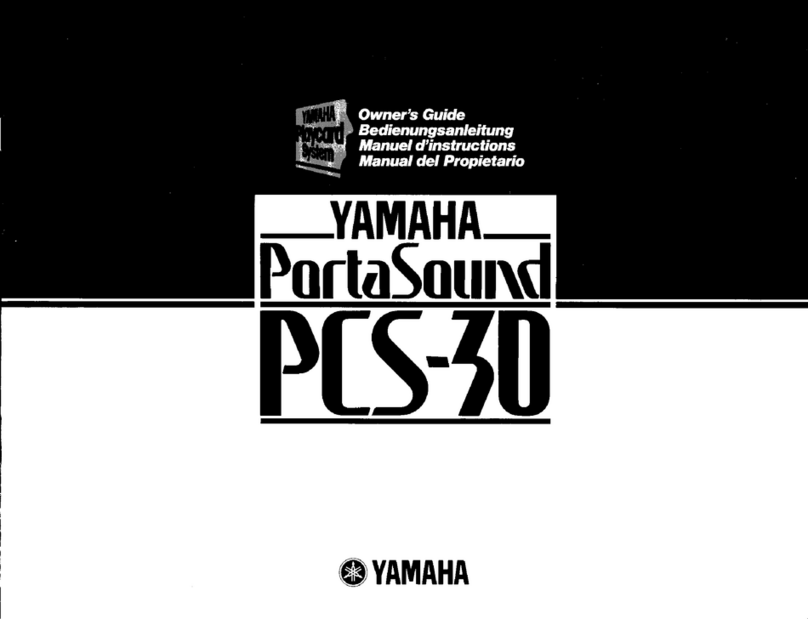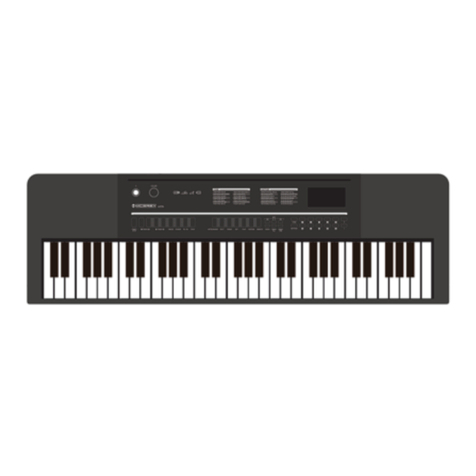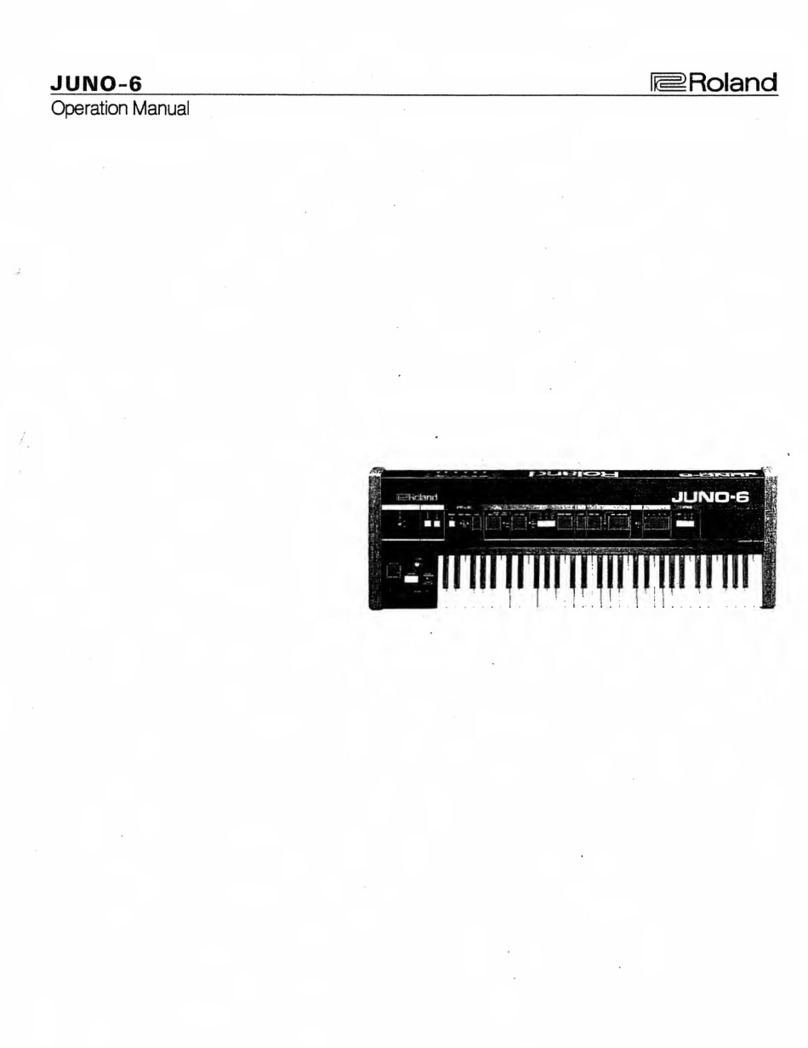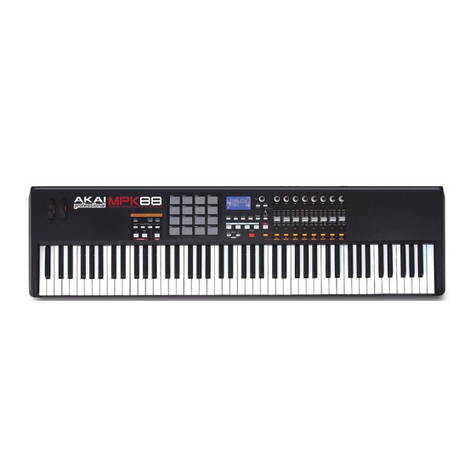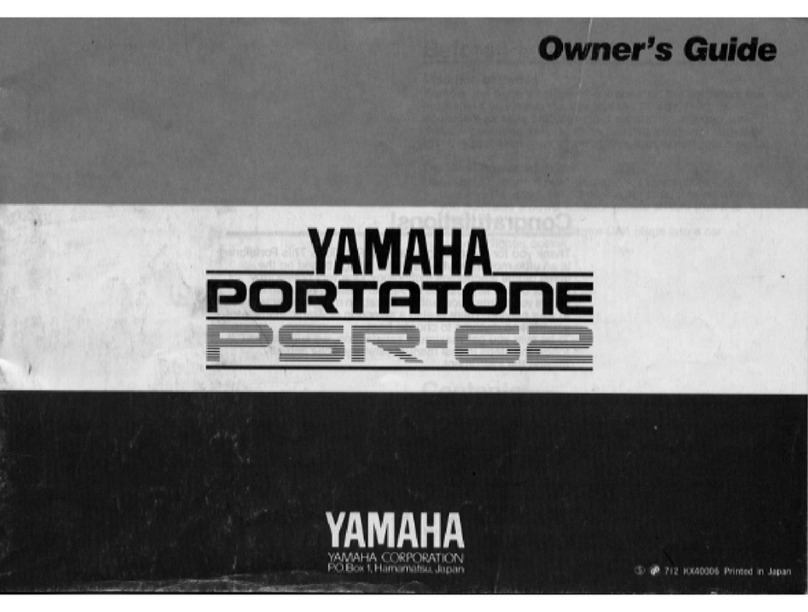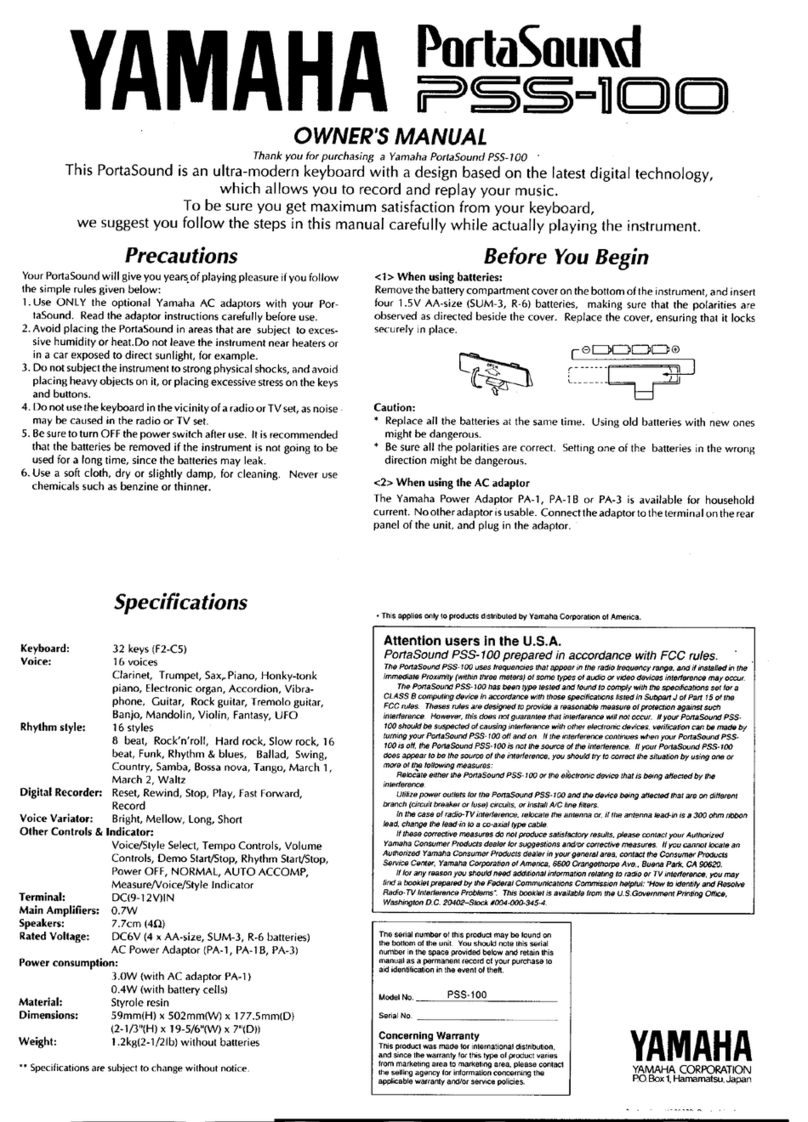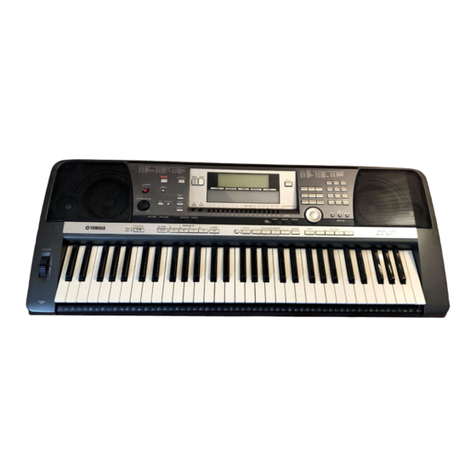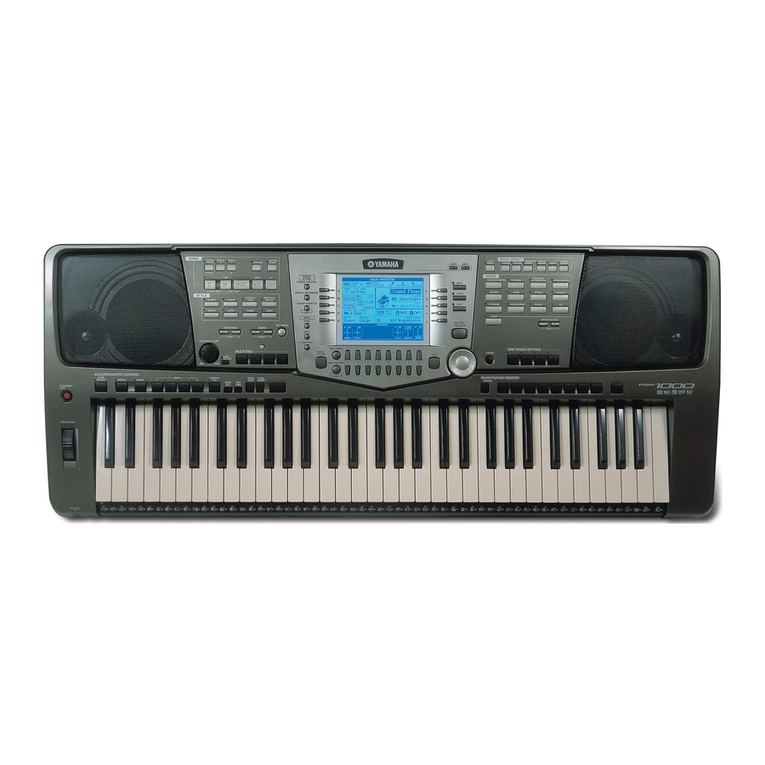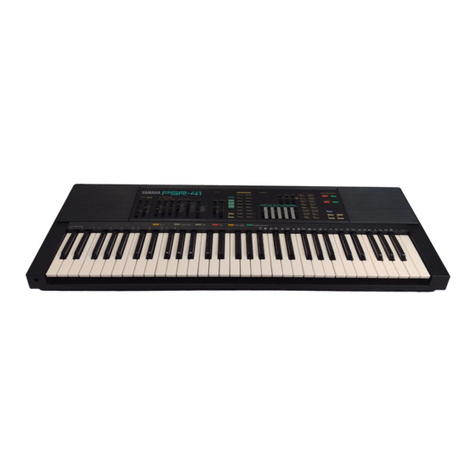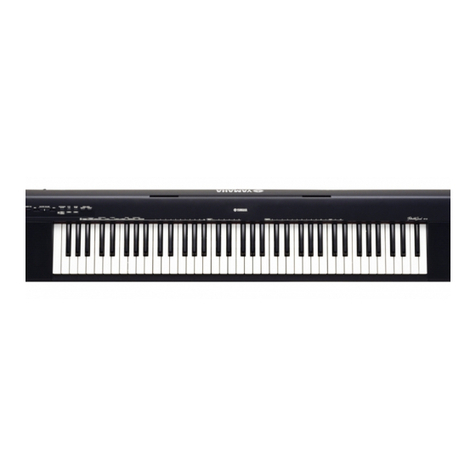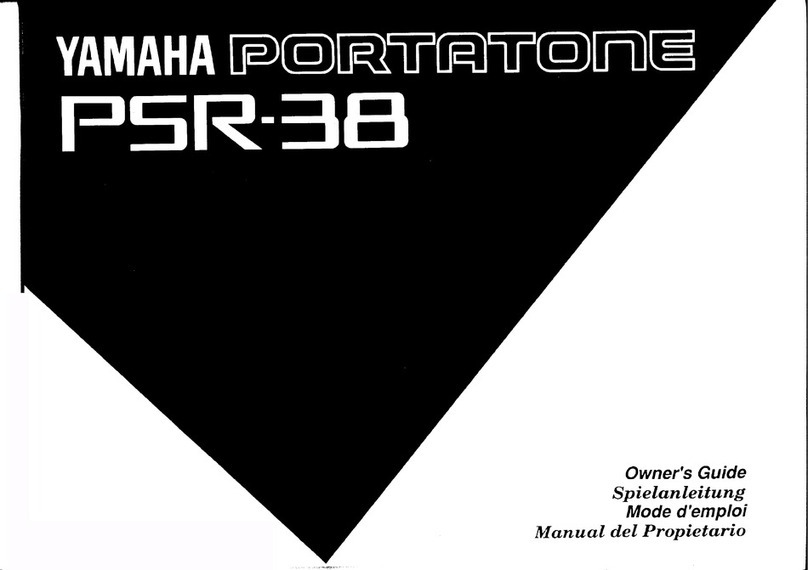
— 1 —
SPECIFICATIONS
GENERAL
Keyboard: 76 keys with touch response (OFF/1/2/3)
Tones: 400 Advanced Tones + 200 Preset Tones + 20 Drum Sets + 100 standard user tones
+ 20 user tones with waves*1+ 4 user drum sets with waves*1+ 50 drawbar organ
tones + 100 user drawbar organ tones (894 tones total); layer/split
Polyphony: 32 notes maximum (10 for certain tones)
Drawbar Organ Function
Drawbars: 9 (16’, 5 1/3’, 8’, 4’, 2 2/3’, 2’, 1 3/5’, 1 1/3’, 1’)
Percussion: Second, Third
Click: On, Off
Effects: DSP (200 types: internal, 100 user areas) + Reverb (16 types) + Chorus (16 types) +
Equalizer (10 types, 4 bands)
Auto Accompaniment
Rhythm Patterns: 182 (internal, 16 user areas*1)
Tempo: Variable (226 steps, = 30 to 255)
Chords: 3 fingering methods (CASIO CHORD, FINGERED, FULL RANGE CHORD)
Rhythm Controller: START/STOP, INTRO/ENDING 1 and 2, VARIATION/FILL-IN 1 and 2, SYNCHRO/
FILL-IN NEXT
Accomp Volume: 0 to 127 (128 steps)
One-touch Presets: Recalls settings for tone, tempo, layer on/off, and harmonize on/off in accordance
with rhythm.
Auto Harmonize:v 10 types : Automatic addition of notes that harmonize with melody note in accordance
with specified Auto Accompaniment chords.
Memory Function
Songs: 5
Recording Tracks: 6 (2 through 6 are melody tracks)
Recording Methods: Real-time, step
Memory Capacity: Approximately 10,000 notes (total for 5 songs)
Edit Function: Equipped
Demo Tunes: 3
Tune Number Name Composer
0 Malibu Sun TECH-NOTE INTERNATIONAL LTD.
1 Island Dusk TECH-NOTE INTERNATIONAL LTD.
2 Ticket to Cambridge TECH-NOTE INTERNATIONAL LTD.
Synthesizer Function
Parameters: Attack time; release time; resonance; cutoff frequency; vibrato type; vibrato delay;
vibrato depth; vibrato rate; octave shift; level; touch sense; reverb send; chorus send;
DSP line; DSP type; DSP parameter; Modulation Assign
Registration Memory
Number of Setups: 32 (4 setups ✕8 banks)
Memory Contents: Tone, Rhythm, Tempo, Layer on/off, Split on/off, Split point, Harmonize on/ off, Mixer
settings (Channels 1 to 10), Effect settings, Touch Response settings, Assignable
jack setting, Transpose, Tuning, Accompaniment volume setting, Pitch bend range,
Auto Harmonize type, MODE button setting, Synchro standby state, Mixer Hold, DSP
Hold, Synthesizer Mode parameters
Mixer Function
Channels: 16
Parameters: Tone; part on/off; volume; pan pot; octave shift; coarse tune; fine tune; reverb send;
chorus send; DSP line; DSP level, DSP pan, DSP system reverb send, DSP system
chorus send
MIDI: 16 multi-timbre receive, GM Level 1 standard
Other Functions
Pitch Bend Range: Adjustable (12 semitones upwards and downwards)
Modulation: Equipped
Transpose: 49 steps (–24 semitones to +24 semitones)
Tuning: Variable (A4 = approximately 440Hz ±100 cents)
LCD: Adjustable contrast
